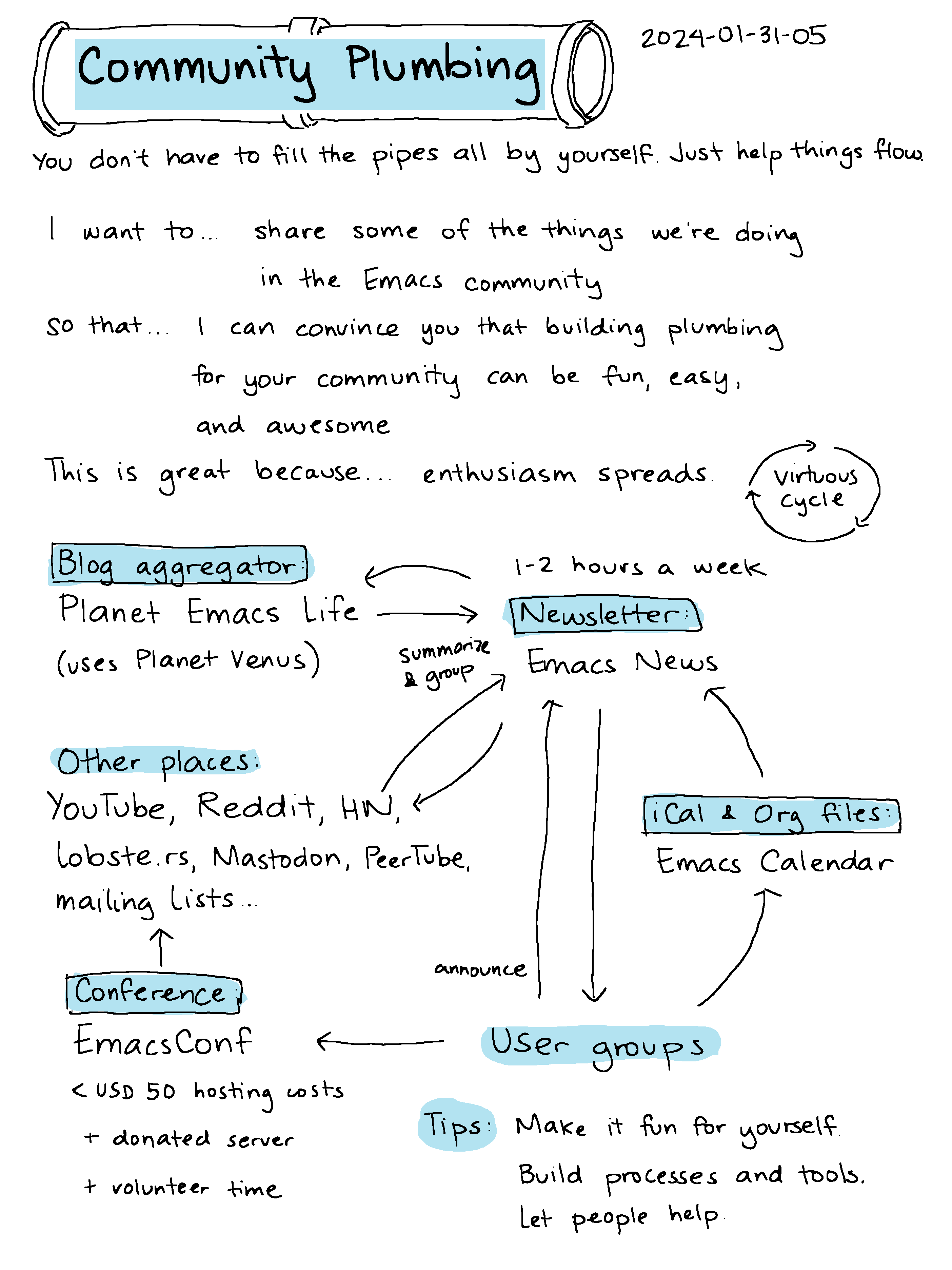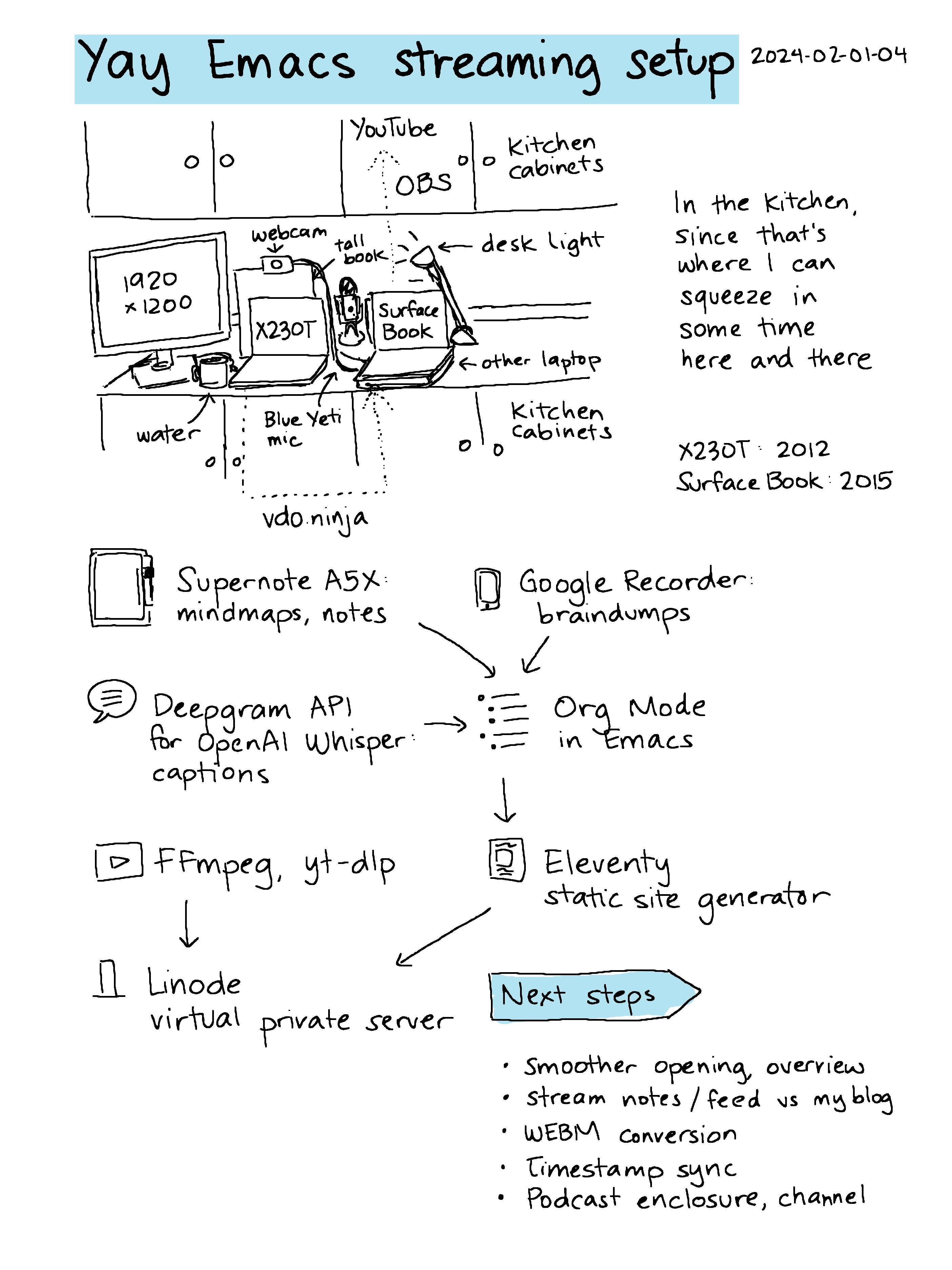Cubing and Emacs: Checking out the competition
| cubing, emacsThere's an upcoming cubing competition. For the 3x3 event, the top 75% of the first round will get to advance to the second round. I wanted to know what our chances were of making it in. There's an unofficial REST API for the World Cube Association (WCA) results so I don't need to download and unpack megabytes of data.
Here's the basic code I used:
(let* ((comp-id "COMP-ID-GOES-HERE") (url (format "https://www.worldcubeassociation.org/competitions/%s/registrations" comp-id)) (dom (with-temp-buffer (insert (plz 'get url)) (libxml-parse-html-region))) (data-dir (expand-file-name "data" (expand-file-name comp-id "~/proj/cubing/"))) len list) (unless (file-directory-p data-dir) (make-directory data-dir t)) (setq list (sort (seq-keep (lambda (o) (let* ((id (replace-regexp-in-string "/persons/" "" (dom-attr o 'href))) (file (expand-file-name (concat id ".json") data-dir)) best) (unless (file-exists-p file) (with-temp-file file (insert (plz 'get (format "https://raw.githubusercontent.com/robiningelbrecht/wca-rest-api/master/api/persons/%s.json" id))))) (let-alist (with-temp-buffer (insert-file-contents file) (json-parse-buffer :object-type 'alist)) (setq best (alist-get 'best (seq-find (lambda (o) (string= (alist-get 'eventId o) "333")) .rank.averages))) (when best (list .id .name (format "%.2f" (/ best 100.0))))))) (dom-by-tag (dom-by-id dom "competition-data") 'a)) (lambda (a b) (< (string-to-number (elt a 2)) (string-to-number (elt b 2)))))) (setq len (length list)) (seq-map-indexed (lambda (o i) (cons (format "%d" (/ (* 100.0 i) len)) o)) list))
It makes a table with percentile, ID, name, and average time for 3x3. Then I can find out where the 75% mark and see if we can make it in. I think I'll be a bit too slow, but the kiddo might be able to make it to the second round. Could be fun.
Posting here in case someone else might find it handy someday!


